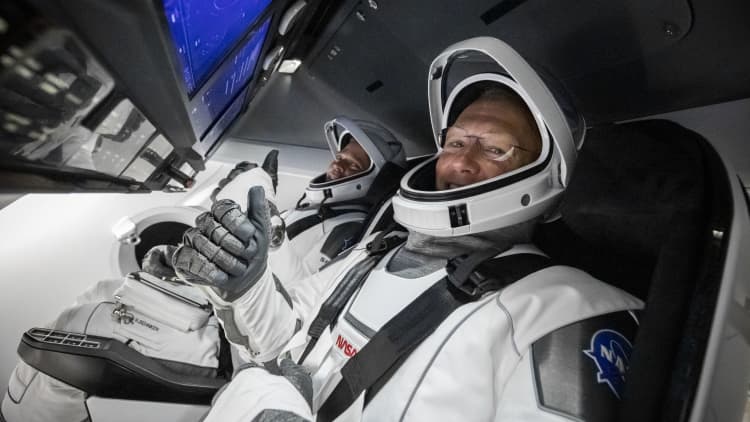Boeing’s Starliner spacecraft atop the United Launch Alliance Atlas V rocket rolls out in Florida on Thursday, May 30, 2024.
Isaac Watson | NASA
Boeing aims to launch its first Starliner flight with astronauts on board on Saturday, in a long-delayed final test of the spacecraft.
The launch is scheduled for 12:25 p.m. EDT from Cape Canaveral, Florida. Two NASA astronauts will be aboard the Starliner capsule, which will be carried by United Launch Alliance’s Atlas V rocket to the International Space Station.
NASA and Boeing called off a launch attempt in early May due to an issue detected with the rocket. ULA, a joint venture of Boeing and Lockheed Martin, replaced the rocket’s problematic valve.
Sign up here to receive weekly editions of CNBC’s Investing in Space newsletter.
After calling off the May attempt, NASA and Boeing found a “small” helium leak in Starliner, causing the agency and company to perform another series of assessments. After analysis, NASA and Boeing believe the source of the leak is in the spacecraft’s helium propulsion system. But officials said last week that the leak is “stable” and “not a safety of flight issue.”
Starliner’s crew debut has been delayed by years, with SpaceX’s competing Dragon capsule flying astronauts for NASA regularly since 2020 under the agency’s Commercial Crew program. To date, Boeing has eaten $1.5 billion in costs due to Starliner setbacks and nearly $5 billion of NASA development funds.
The spacecraft was once seen as a competitor to SpaceX’s Dragon. However, various setbacks and delays have steadily slipped Starliner into a backup position for NASA, with the agency taking the rare step of reassigning astronauts off the first Boeing crew flights in 2021. Boeing is under contract to fly six operational Starliner missions to the ISS. Saturday’s crew flight test represents the final major step before receiving NASA certification to begin regular missions.
The astronauts
NASA astronauts Butch Wilmore, left, and Suni Williams.
Credit: Kim Shiflett | NASA
Butch Wilmore and Suni Williams are flying on Starliner, with the former serving as the spacecraft’s commander and the latter as its pilot.
Wilmore joined NASA in 2020 and has flown to space twice previously on the Space Shuttle and Russia’s Soyuz. Before NASA, Wilmore was a U.S. Navy pilot.
Williams was selected by NASA in 1998 and has also flown to space twice before, on the Space Shuttle and then the Soyuz. Williams was also a Navy pilot like Wilmore before joining the space agency.
The rocket and capsule
Boeing’s Starliner spacecraft atop the United Launch Alliance Atlas V rocket is seen on the launch pad of Space Launch Complex-41 at Cape Canaveral Space Force Station in Florida on Thursday, May 30, 2024.
Isaac Watson | NASA
Starliner launches on ULA’s Atlas V. The rocket debuted in 2002, and the Starliner crew flight test represents its 100th launch.
The capsule itself is built to carry as many as four NASA astronauts per flight and more than 200 pounds of research and cargo. The spacecraft lands using a parachute and airbag system. Starliner is reusable, with each capsule designed to fly as many as 10 missions.
The mission
Boeing’s crew flight test aims to certify the Starliner system as capable of carrying NASA astronauts to and from the ISS.
If Starliner launches on Saturday, it will fly in space for about 25 hours before a planned docking with the International Space Station at 1:50 p.m. on Sunday. The astronauts will then spend about a week on the ISS, focused on testing Starliner, before returning to Earth.


